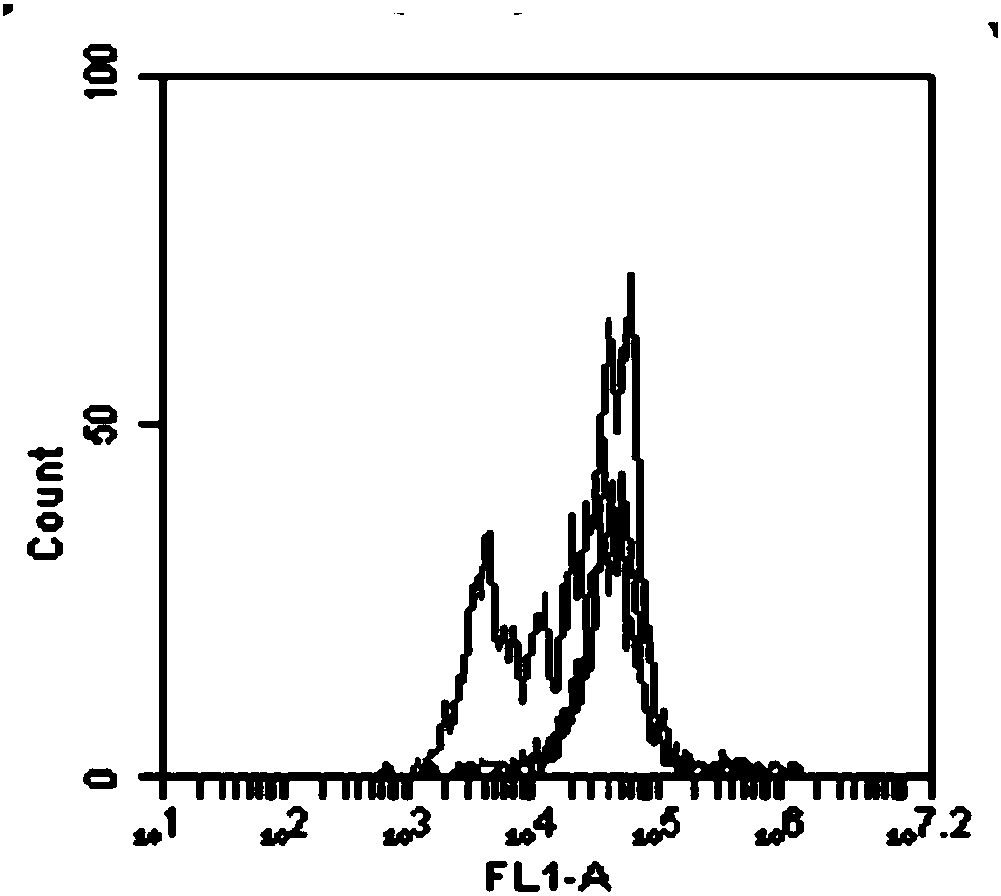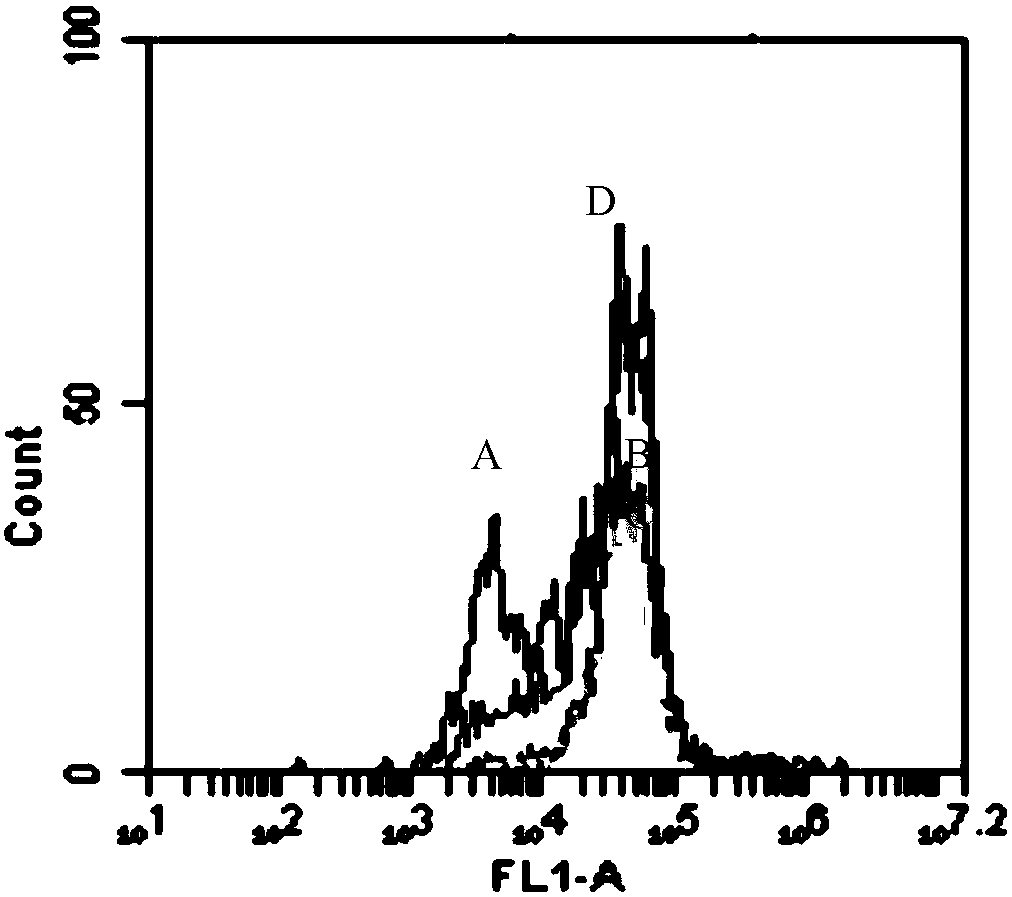Monoclonal antibody capable of blocking human Tim-3 function as well as coding gene and application of monoclonal antibody
A monoclonal antibody, coding technology, applied in application, antibody, genetic engineering and other directions, can solve the problem of low affinity of Tim-3 antibody, and achieve the effect of inhibiting signal transduction
- Summary
- Abstract
- Description
- Claims
- Application Information
AI Technical Summary
Problems solved by technology
Method used
Image
Examples
Embodiment 1
[0046] Embodiment 1 Construction of anti-human Tim-3 monoclonal antibody CDT1 hybridoma cell line
[0047] 1. Materials
[0048] DNA immune adjuvant was purchased from Sigma; fetal bovine serum and PRMI1640 medium were purchased from Gibco; SP2 / 0 cells were purchased from ATCC; BALB / c mice were provided by the Experimental Animal Center of Zhejiang University.
[0049] 2. Method:
[0050] (1) Plasmid construction
[0051] Primers were designed according to the sequence of the Tim-3 gene found on NCBI, and the DNA sequence of the Tim-3 gene was amplified using human cDNA as a template, which was then constructed on the pcDNA3.1 plasmid using molecular biology methods.
[0052] (2) Immunization of mice
[0053] BALB / c mice aged 4-6 weeks were selected, and the constructed Tim-3 gene recombinant plasmid was dissolved in PBS and an equal volume of adjuvant, mixed and emulsified, and subcutaneously and intraperitoneally multi-point immunized. Every 2 weeks after the first immun...
Embodiment 2
[0060] Example 2: Anti-human Tim-3 monoclonal antibody CDT1 antibody subclass identification and stability test
[0061] According to the instructions of the antibody subclass identification kit, the subclass of the antibody was identified, and the result was that the heavy chain was IgG2a, and the light chain was Kappa.
[0062] The hybridoma cell line was continuously subcultured in vitro for 3 months, and the antibody titer in the supernatant was determined; the frozen hybridoma cell line was recovered after 4 months, and the antibody titer in the supernatant was detected, and no significant changes occurred. Changes, indicating that the obtained antibody-producing hybridoma cell line has stable performance.
Embodiment 3
[0063] Example 3: Cloning of heavy and light chains of anti-human Tim-3 monoclonal antibody CDT1
[0064] 1. Materials
[0065] Monoclonal antibody heavy chain and light chain gene amplification primers were designed according to the literature and synthesized at Shanghai Sangon Bioengineering Co., Ltd.; DNA fragment purification kit and plasmid extraction kit were purchased from QIAGEN; pMD-18T kit and reverse transcriptase Purchased from TAKARA Company; Competent cells were purchased from Promega Company; KOD plus fidelity PCR enzyme was purchased from TOYOBO Company; Trizol reagent was purchased from Invitrogen Company.
[0066] 2. Methods and results
[0067] (1) Take 5×10 6 -10 7 The monoclonal antibody hybridoma cells were centrifuged to remove the supernatant, and 1ml Trizol reagent was added to repeatedly pipette until the cells were fully lysed. After standing at room temperature for 5 minutes, add 0.2ml of chloroform, mix up and down, and let stand at room temper...
PUM
 Login to View More
Login to View More Abstract
Description
Claims
Application Information
 Login to View More
Login to View More - R&D Engineer
- R&D Manager
- IP Professional
- Industry Leading Data Capabilities
- Powerful AI technology
- Patent DNA Extraction
Browse by: Latest US Patents, China's latest patents, Technical Efficacy Thesaurus, Application Domain, Technology Topic, Popular Technical Reports.
© 2024 PatSnap. All rights reserved.Legal|Privacy policy|Modern Slavery Act Transparency Statement|Sitemap|About US| Contact US: help@patsnap.com










